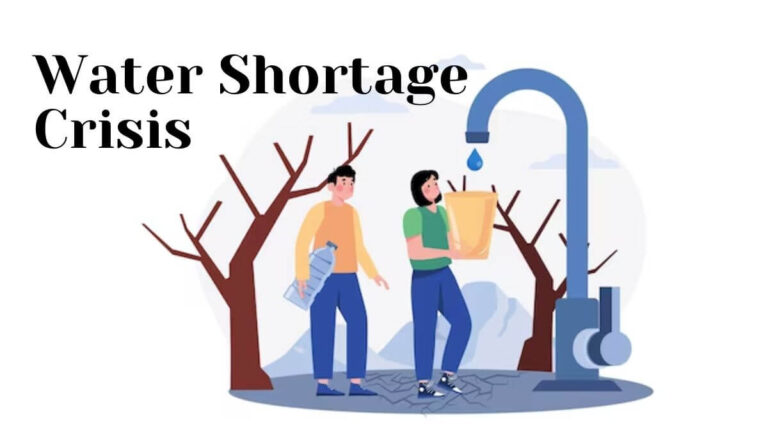Distilled Water Shortage 2024: Are You Prepared?
The whispers are getting louder. Concerns are rising. And the question on many minds is this: Are we facing a distilled water shortage in 2024? While predicting the future with absolute certainty is impossible, understanding the potential factors contributing to a shortage, and how to prepare, is crucial. This article will delve into the current situation, explore potential causes, and provide actionable steps you can take to ensure you and your family are ready for any eventuality.
Understanding the Growing Concern
The demand for distilled water is on the rise. It’s no longer just a requirement for scientific labs and medical facilities. From home appliances and humidifiers to CPAP machines and specific dietary needs, distilled water plays a critical role in daily life for many. This increased demand, coupled with potential disruptions in supply chains and environmental factors, has fueled speculation about a possible shortage.
What’s Driving the Potential for a Distilled Water Shortage?
Several factors could converge to create a scenario where distilled water becomes scarce:
- Increased Demand:
- Growing use in home appliances like steam irons, humidifiers, and espresso machines to prevent mineral buildup.
- Rising popularity of CPAP machines for sleep apnea, which require distilled water for optimal hygiene.
- Increased awareness of the benefits of distilled water for specific health conditions and dietary needs.
- Supply Chain Disruptions:
- Potential for raw material shortages used in the distillation process.
- Transportation bottlenecks that can delay the delivery of distilled water to retailers.
- Labor shortages impacting production facilities.
- Environmental Factors:
- Drought conditions and water scarcity in some regions.
- Increased costs associated with water purification and processing.
- Potential for natural disasters disrupting production and distribution.
Identifying the Areas Most Vulnerable
While a nationwide shortage is unlikely, certain regions may be more vulnerable due to factors like:
- Areas experiencing water scarcity: Regions already facing drought conditions could be more susceptible to disruptions in distilled water production.
- High-population areas: Areas with a higher population density will likely experience increased demand and competition for resources.
- Areas with limited access to alternative water sources: Individuals and communities reliant on municipal water sources may struggle to find alternative solutions if distilled water becomes unavailable.
Preparing for a Potential Distilled Water Shortage
Proactive planning can significantly mitigate the impact of a potential shortage. Here’s what you can do:
- Assess Your Needs:
- Determine your current and anticipated distilled water requirements. Consider uses like:
- Medical devices (CPAP machines, nebulizers)
- Home appliances (humidifiers, steam irons)
- Baby formula preparation
- Pet care
- Calculate how much distilled water you use daily, weekly, and monthly.
- Determine your current and anticipated distilled water requirements. Consider uses like:
- Stock Up Wisely:
- Purchase distilled water in advance, storing it properly in a cool, dark place.
- Consider buying larger containers to reduce the need for frequent purchases.
- Check expiration dates to ensure the water remains safe and effective.
- Explore Alternative Water Sources:
- Boiling and Condensation: Boiling tap water for 20 minutes followed by condensation collection can offer a basic form of distilled water.
- Rainwater Harvesting: Implement a rainwater harvesting system for non-potable uses.
- Reverse Osmosis Systems: Consider installing a reverse osmosis system, which can remove many contaminants from tap water. Remember, this water won’t be distilled but it can be used for many applications.
- Conserve and Prioritize:
- Use distilled water only when absolutely necessary.
- Prioritize distilled water for essential needs like medical devices and infant formula.
- Explore alternatives for less critical applications.
- Stay Informed:
- Monitor news and local reports for updates on water supply and potential shortages.
- Follow official guidance from your local authorities.
The Importance of Not Panicking
It’s crucial to remain calm and avoid panic buying. Hoarding can exacerbate the problem and make it harder for everyone to access the resources they need. Planning ahead and being prepared is the key to navigating any potential shortage effectively.
Frequently Asked Questions (FAQs)
- What’s the difference between distilled water and purified water? Distilled water is created by boiling water and collecting the condensed steam, leaving behind minerals and impurities. Purified water can be achieved through various processes, including reverse osmosis, filtration, and distillation. While both are cleaner than tap water, distilled water is considered the purest form as it removes all dissolved solids.
- How long does distilled water last? Properly sealed distilled water can last indefinitely. However, once opened, it’s best to use it within a few days to prevent contamination. Store distilled water in a cool, dark place.
- Can I make distilled water at home? Yes, you can make distilled water at home using a distiller or by boiling water and collecting the steam.
- Is it safe to drink distilled water? Yes, distilled water is safe to drink. However, it lacks essential minerals, so it’s not the primary source of hydration, but it can be used if necessary.
- Where can I buy distilled water? Distilled water is typically available at supermarkets, pharmacies, and hardware stores. You can also purchase it online.
Conclusion: Preparedness is Key
The potential for a distilled water shortage in 2024 warrants attention and proactive planning. By understanding the contributing factors, assessing your individual needs, and implementing preparedness strategies, you can significantly reduce your vulnerability. Remember that informed preparation and a calm approach are the most effective tools for navigating any potential water-related challenges. Stay informed, stay prepared, and ensure you’re ready for what the future holds.




